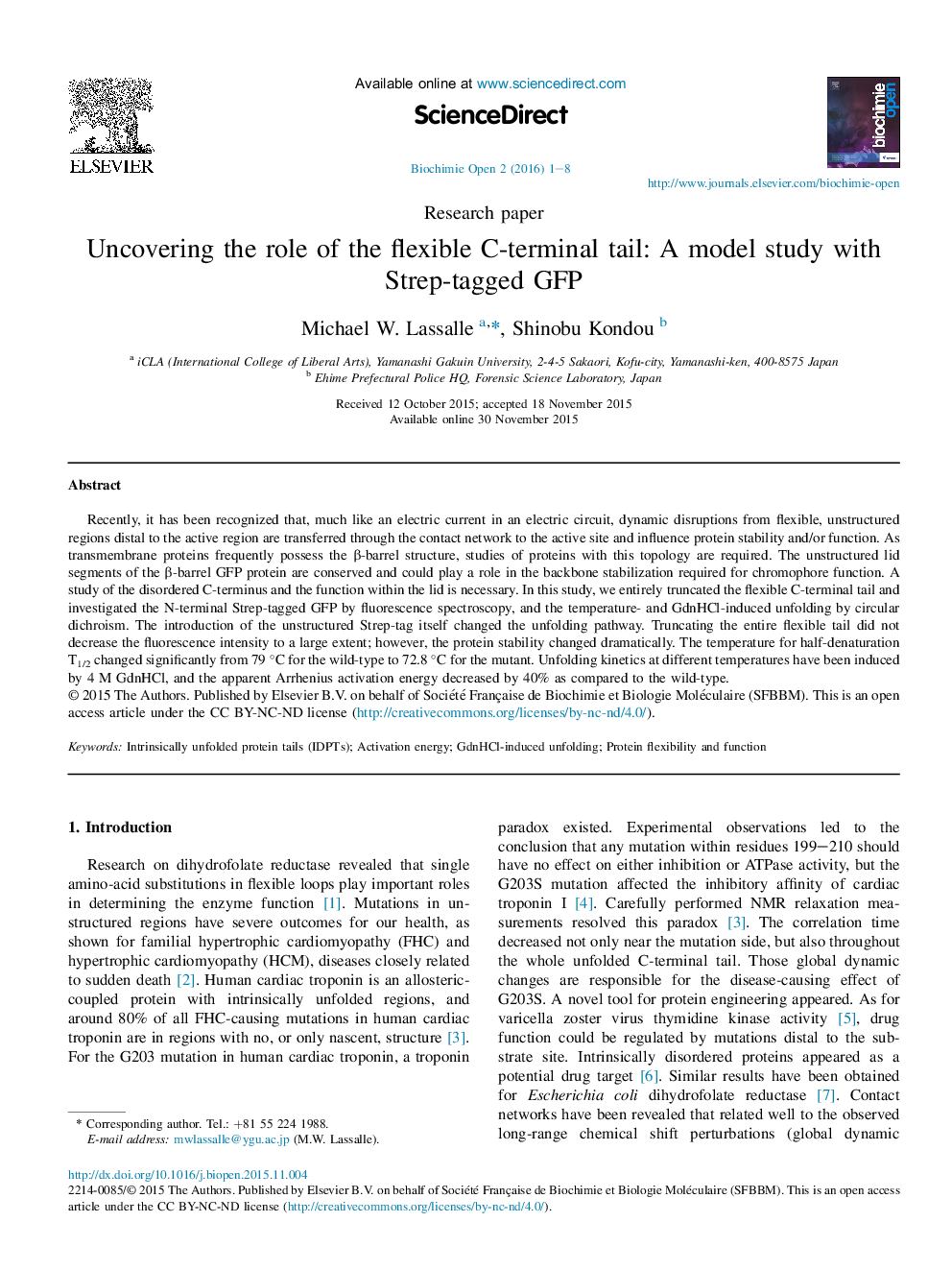| Article ID | Journal | Published Year | Pages | File Type |
|---|---|---|---|---|
| 1953610 | Biochimie Open | 2016 | 8 Pages |
•We show the dramatic effect of truncating the unstructured C-terminal tail of GFP.•Strep-tagged GFP unfolds via an association-limited kinetic pathway.•Unfolding rate constants are valuable to compare proteins that irreversible unfold.•The unfolding of Strep-tagged GFP, but not that of GFP, leads to an unfolded state with decreased mean residue ellipticity.
Recently, it has been recognized that, much like an electric current in an electric circuit, dynamic disruptions from flexible, unstructured regions distal to the active region are transferred through the contact network to the active site and influence protein stability and/or function. As transmembrane proteins frequently possess the β-barrel structure, studies of proteins with this topology are required. The unstructured lid segments of the β-barrel GFP protein are conserved and could play a role in the backbone stabilization required for chromophore function. A study of the disordered C-terminus and the function within the lid is necessary. In this study, we entirely truncated the flexible C-terminal tail and investigated the N-terminal Strep-tagged GFP by fluorescence spectroscopy, and the temperature- and GdnHCl-induced unfolding by circular dichroism. The introduction of the unstructured Strep-tag itself changed the unfolding pathway. Truncating the entire flexible tail did not decrease the fluorescence intensity to a large extent; however, the protein stability changed dramatically. The temperature for half-denaturation T1/2 changed significantly from 79 °C for the wild-type to 72.8 °C for the mutant. Unfolding kinetics at different temperatures have been induced by 4 M GdnHCl, and the apparent Arrhenius activation energy decreased by 40% as compared to the wild-type.
